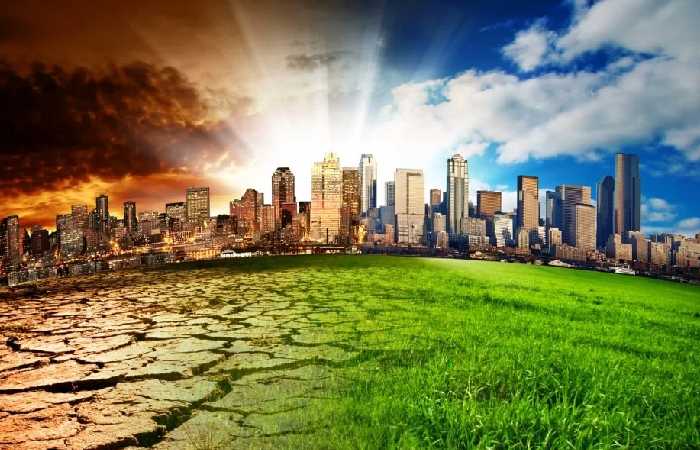Why Is It Important To Engage Communities In Preparedness Efforts?
In this blog, we will look into why participating communities in preparedness tasks is essential. We will investigate how their participation ensures that strategies are more effective and efficient while furthering empowerment, resilience, and long-term sustainability. It will focus on the various positive aspects of community involvement in disaster preparation, ranging from enhancing immediate reaction to encouraging creativity and creating trust.
We aim to encourage more inclusive and participatory ideas of preparedness by emphasizing the significance of community engagement. For in times of disaster and catastrophes, after all, it does take a village. So, let us find out why and how we can more effectively engage communities in preparing efforts to develop a future free from disasters.
Table of Contents
Why Is It Important To Engage Communities In Preparedness Efforts?
Engaging communities in preparedness efforts is a crucial part of disaster management for several reasons:
-
Local Knowledge And Expertise
In each community, there are individuals who know a lot about their local area. This may vary from knowledge on the nature of terrain to weather patterns, dangerous zones or even specific practices that are handed down through generations. Furthermore, they know about local assets that are available and the best ways to use them. For example, coastal fishermen will know how weather conditions vary along the coast while farmers have a view of what droughts or flood causes are.
Utilizing such information would allow designing more focused and effective strategies of disaster preparedness. It can assist in making safe escape points, communication channels and available sources available at the time of disaster. Such local wisdom is important for improving the effectiveness of preparedness efforts.
-
Empowerment And Ownership
Active participation in preparedness activities usually makes people feel more empowered. They move from being passive aid beneficiaries to active players for their own safety. This causes a greater ownership of preparedness plans which increase the likelihood that they will participate, implement and promote these plans within their communities.
This sense of possession also contributes to the maintenance and revisions that occur regularly in these plans and measures, making them effective even after long periods. Moreover, community empowerment can help develop a spirit of solidarity and collective responsibility which are essential ingredients for disaster resilience.
-
Improved Disaster Response

Indeed, community members are the first responders when disaster comes. They are the first on site to assist, carry out rescue operations, make sure that affected people get instant treatment. Preparedness efforts can train the members of these communities in first aid, search and rescue operations, and basic disaster management.
They can also be trained to utilize the resources efficiently. By doing so, it will be able to improve the community’s immediate response when a disaster strikes which greatly reduces loss of life and property.
It also makes sure that help is provided within the shortest time notice which can be very critical in disaster times where every second counts. Community-based preparedness means that response is not only left for agencies outside of the community but begins with the people themselves.
-
Resilience Building
As a rule, an involved community is also an enduring one. In this sense, resilience means the ability of a society to be able not only withstand but also adapt and recover after being hit by such disasters. Engaging the community in preparedness effort, they have necessary skills, knowledge and resources that can remain used to address disasters. That empowerment enables the community to recover more quickly and robustly after a disaster.
For instance, the ability to know how you can prepare as well as stockpile emergency supplies or even something simple like being aware of the fastest route that would lead one directly into a safe place from any given point. Such steps mitigate the negative effects of a disaster and engender a sense of independence as well as resilience towards subsequent mishaps.
-
Effective Use Of Resources
Communities’ engagement can also result in efficient use of resources. Due to their close familiarization with the area, community members can determine how best and cheapest resources may be allocated for disaster preparedness. This could involve identifying which infrastructure needs to be reinforced, where further training remain needed or from what sources resources can actually come in an emergency. In order to benefit from these insights, authorities can adequately utilize resources without wasting them and see that their preparedness measures are efficient in terms of impact.
-
Enhanced Communication And Cooperation
Community engagement encourages an atmosphere of transparency and collaboration. These stakeholders include community members, local organizations and government agencies. It is through constant interactions that these bodies can be able to harmonize their efforts, thereby eliminating misunderstandings and making sure everyone understands what needs to happen during disaster preparedness and response as well the recovery plans. This enhanced coordination can also result in improved execution of plans, quicker responses, and more effective recovery operations.
-
Trust Building
One of the major outcomes in building community engagement in preparedness efforts is trust. Active participation of communities makes the authorities or organisations responsible for disaster management more trustworthy in it. This trust may affect the efficiency of response and recovery measures. For instance, during a crisis community members would likely be more inclined to follow evacuation orders or other instructions if they trust the source of information.
More importantly, trust can make players cooperate better and share responsibility for disaster situations. Trust also encourages easier communication because people are more at ease presenting complaints, inquiries and advice to those whom they trust.
-
Inclusivity
Engaging communities ensures that preparedness efforts are inclusive and consider the unique needs of all members within a community. It also applies to older adults who may have mobility or health issues, children with special needs which require specialized care and support systems, individuals living with disabilities that could need accessible modes of communication or transportation facilities ,and people coming from cultural diverse backgrounds whose demands possibly differ.
Inclusive preparedness initiatives can result in more successful disaster response and recovery because the needs of all members of the community remain given equal consideration. This means that the efforts remain community or competency focused; no one gets left behind in times of crisis.
-
Cultural Sensitivity

Each community has its distinct cultural norms, beliefs and traditions. These unique features can remain comprehended and honoured if communities remain involved in plans of preparedness. For example, some communities may have special traditions related to food and shelter or communicating during emergencies. Thus, if these cultural aspects remain recognized and incorporated into the preparedness plans they can help make response efforts more effective and acceptable thereby making them successful as well sustainable.
-
Promotes Self-Reliance
Communities engaged in preparedness efforts become empowered, gaining the tools, knowledge and resources necessary to be more self-reliant. This change can decrease the reliance on aid from outside and enables communities to be more proactive and effective when a disaster occurs.
For instance, a community participating in emergency planning might acquire skills like first aid; how to construct an emergency shelter or ways of communicating during emergencies. These skills make them capable of responding promptly and efficiently without having to wait for outside assistance.
Conclusion
The emphasis on involving communities in preparedness cannot remain understated. Communities approaches, insights knowledge and commitment that communities provide can be irreplaceable or indispensable in designing strategies as well as executing the project to tackle threatened emergencies.
Their intimate insight into the local hazards and assets, as well as their unique talent in creating trust and promoting dialogue that enables inclusive consensus across diversity significantly boosts our collective capacity to anticipate, react to and improve from disasters. On top of that, the community engagement process empowers communities; it builds their capacity and strengthens ties between them through fostering innovation thus contributes to psychological well-being.

